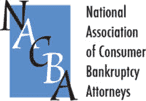For most people who , the fresh financial start is a relief. They recover from the difficult time and move on without having to file for another bankruptcy down the line. Some, though, find that a surprise medical bill, job loss, or some other financial stress results in the need for another bankruptcy filing. You may find, however, that filing for bankruptcy a second time is not as easy.
Bankruptcy Filing Time Limits
You can file for bankruptcy as many times and as often as you wish. However, the law limitshow long you must wait after your previous bankruptcy filing to file again if you did receive a full discharge, or elimination, of debt in the previous case:
- Eight years between Chapter 7 filings
- Two years between Chapter 13 filings
- Four years after Chapter 7 to file Chapter 13
- Six years after Chapter 13 to file for Chapter 7
Although you must wait to file a new bankruptcy if you were awarded relief from your debts, you are not required to wait if your previous case was dismissed without receiving dismissal of your debts. There is one key disadvantage in filing again after having your case dismissed — the automatic stay. In your first bankruptcy filing, you receive an automatic stay, or stoppage, of all debt collection activities immediately upon filing. For the second bankruptcy filed within a year, though, the automatic stay will last for only 30 days, and any subsequent filings within one year receive no automatic stay.
The Difficulty of Multiple Bankruptcies
Even if you are refiling simply because an error in paperwork resulted in the dismissal of your first attempt at bankruptcy, you will find that your second filing is more difficult. Not only must you pay filing and attorney fees again, but the automatic stay, which protects you from creditor harassment, will be limited in length or may not exist at all.
One reason that filing for bankruptcy can be more difficult each time is that creditors have the opportunity to object to discharging your debt. Requesting discharge from the same creditor more than once can raise suspicions that you racked up the debt with no intent to pay. If the creditor wishes, they may object on those grounds, which could result in a requirement that you pay the creditor in full.
The court appointed trustee can also tell the court that it would be unwise to allow you to receive a bankruptcy discharge if they feel that you are abusing the bankruptcy system. Multiple bankruptcy filings can raise red flags for trustees, who will look at you more closely at your case in an attempt to determine whether or not you are acting honestly.
Contact a Bankruptcy Attorney Today
The attorneys at Bankruptcy Law Center can discuss all of your options if you are considering a second or subsequent bankruptcy. Our attorneys have dealt with multiple cases and may be able to help you take advantage of other alternatives to bankruptcy and can help to ensure that your case goes smoothly if you do file for bankruptcy.
(image courtesy of Tristan Colangelo)








